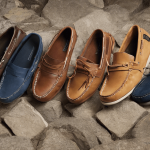Understanding Vegan Winter Coats
Vegan winter coats have emerged as a symbol of ethical fashion, prioritising sustainable materials and practices that align with cruelty-free principles. These coats avoid animal-derived materials like wool, down, or leather, opting instead for innovative textiles such as recycled polyester, organic cotton, and plant-based fibres. The growing demand for ethical fashion has accelerated the development of these vegan materials, ensuring that consumers do not have to compromise on warmth or style.
Adopting sustainable practices in the production of vegan winter coats is paramount. Manufacturers focus on reducing waste and lowering carbon footprints throughout the supply chain. Techniques such as using fewer resources in production and sourcing raw materials responsibly help mitigate environmental impact. These practices are integral in shaping a future where fashion aligns with environmental preservation.
Also to discover : Discover the Most Flattering Skirt Lengths for Petite Women in the UK: A Style Guide
Opting for vegan winter coats offers significant environmental benefits. Unlike traditional materials, vegan alternatives require less water and energy, and often involve fewer harmful chemicals in their production. This reduces pollution and conserves natural resources. Choosing a vegan winter coat represents a commitment to protecting the planet while enjoying fashion that is both functional and trendy. The move toward vegan options reflects a broader consumer shift toward more responsible living.
Key Materials Used in Vegan Winter Coats
When searching for a vegan winter coat, the choice of materials plays a crucial role in both environmental impact and comfort. Eco-friendly fabrics and sustainable textiles are at the heart of vegan outerwear, offering warmth without compromising on ethics.
Also to discover : Essential Pieces for a Stylish Capsule Wardrobe in the UK: Ultimate Guide for Fashion Enthusiasts
Polyester and Recycled Fabrics
Polyester, especially when sourced as recycled polyester, is a common material in vegan coats. It’s both durable and water-resistant, making it ideal for winter use. Opting for recycled versions significantly reduces environmental footprint compared to virgin polyester.
Plant-Based Materials
Vegan coats now frequently incorporate plant-based materials. Fabrics such as Tencel, produced from sustainably sourced wood pulp, offer a silky feel and are biodegradable. Additionally, hemp and organic cotton are prized for their breathability and minimal environmental impact, providing warmth without harm.
Alternatives to Down Insulation
For insulation, traditional down has viable plant-based insulation options. Materials like PrimaLoft or Thinsulate use synthetic fibers to mimic the warmth of down. Likewise, companies are innovating with materials such as kapok—harvested from seed pods—for insulation, offering a similar cozy feel. These alternatives underscore a growing trend towards sustainability and compassion in fashion, reinforcing that ethical choices don’t mean sacrificing warmth and quality.
Insulation Types and Their Importance
Understanding insulation types plays a crucial role in selecting a winter coat. The market offers various insulation types, such as synthetic and natural. Synthetic insulation, often crafted from polyester fibers, is popular due to its water resistance and lightweight nature. In contrast, natural insulation usually relies on down, harnessing its excellent warmth retention.
Despite down’s exceptional insulating properties, it poses concerns for those seeking vegan insulation options. Vegan insulation often uses advanced synthetic materials, providing a cruelty-free yet warm alternative.
Key factors to consider include the warmth-to-weight ratio. This ratio determines how effectively an insulation type keeps warmth in relation to its weight. A higher warmth-to-weight ratio signifies better performance in keeping you warm without adding bulk. This characteristic is vital for winter coats, as it affects comfort and usability, especially during outdoor activities.
The choice between synthetic and natural insulation types also influences coat performance. Synthetic options can retain warmth even when wet, which is advantageous in damp climates. Natural down tends to be more compressible, offering compact storage but may falter in wet conditions without proper waterproofing. Selecting the right insulation ensures enhanced comfort and functionality in varied winter environments.
Water Resistance and Weather Protection
In the quest for a reliable water-resistant coat, understanding the nuances of weatherproofing is crucial. These garments are more than just barriers against rain; they incorporate advanced protective features aimed at maximizing comfort and durability.
Coating Technologies
Water-resistant coats employ various coating technologies to prevent moisture penetration. Common coatings include polyurethane and DWR (Durable Water Repellent). Each has unique properties; for example, DWR provides a shield against light rain while maintaining the fabric’s softness. These coatings are critical for ensuring the coat remains lightweight and functional in diverse conditions.
Breathability of Materials
While protecting from external moisture, effective breathability is essential to manage sweat and internal condensation. Materials such as Gore-Tex are designed to balance water resistance with airflow, preventing overheating. This breathability ensures that even during rigorous winter activities, the wearer remains comfortable and dry.
Additional Protective Features
Beyond water resistance, coats often incorporate additional protective features like wind-resistant fabrics and extra insulation layers. These elements help in enhancing overall warmth and shielding against harsh weather. Such weatherproofing measures make these coats valuable for outdoor winter activities, offering an essential line of defense against the elements.
Style and Aesthetic Considerations
In today’s fashion world, fashionable vegan coats are gaining widespread attention, especially in the winter wardrobe sector. The current trends focus on designs that not only ensure warmth but also captivate with their aesthetic appeal. Vegan coats are now offered in a plethora of styles, allowing consumers to align with their personal aesthetic while embracing sustainable options.
A significant trend in the marketplace is the remarkable balance between aesthetics and functionality. It is no longer necessary to choose between looking stylish and staying warm. Designers are innovating with high-tech materials that mimic wool and fur, ensuring these coats are both fashion-forward and practical.
When selecting a premium winter coat, the importance of fit and silhouette cannot be overstated. A well-fitted coat is essential for achieving a polished look while ensuring comfort. The silhouette plays a pivotal role in this and provides versatility in layering during the colder months. Consumers are encouraged to try various styles, such as tailored fits for a smarter look or oversized designs for a casual, yet chic appearance.
Ultimately, these factors contribute to the growing popularity and acceptance of vegan coats as a staple in modern winter attire.
Comparison of Brands and Recommendations
Exploring vegan coat brands, particularly those that are eco-friendly, can be a challenge with so many options available. Each brand offers unique features, which makes it essential to select wisely.
Established Vegan Brands
Among the premium eco-friendly brands, there are those that have withstood the test of time. Some brands are praised for their commitment to sustainability and ethical production. These companies generally provide excellent quality vegan coats, with classic designs that appeal to the eco-conscious consumer.
Emerging Brands in Sustainable Fashion
The vegan fashion landscape is always evolving, with new entrants regularly making waves. These emerging brands often bring fresh perspectives and innovative materials, making them exciting players in sustainable fashion. Their offerings typically reflect contemporary styles while adhering to ethical practices.
Price vs. Quality Analysis
When evaluating brand reviews, it’s vital to consider the delicate balance between price and quality. Premium eco-friendly brands often come at a higher cost, but they justify this with durable, stylish, and sustainable products. In contrast, some newer brands offer competitive pricing but may still require validation in terms of long-term quality and customer satisfaction. Making an informed decision involves weighing these factors to find the ideal balance for your needs.
Caring for Vegan Fabrics
Maintaining your vegan winter coat ensures both its appearance and longevity. Begin with general maintenance practices. Regularly brush off dirt and debris using a soft-bristled brush to preserve the fabric’s texture and integrity. For care tips, inspecting seams and fastenings routinely can prevent minor issues from escalating.
When it comes to washing your vegan coat, it’s crucial to follow the label instructions precisely; using a gentle, eco-friendly detergent is recommended. Ensure to wash on a cool, delicate cycle to avoid fabric damage. For drying, it’s advised to air dry the coat, laying it flat on a clean, dry towel. This helps maintain the fabric’s shape and keep it in pristine condition.
Extending the lifespan of a vegan winter coat is possible with a few additional steps. Store the coat in a cool, dry place, preferably protected with a garment bag to safeguard it from dust and sunlight. Additionally, occasional professional cleaning can help in maintaining the coat’s quality over time. Always approach stains with caution, using spot treatments only when necessary to prevent potential alterations to the fabric’s appearance.
Environmental Impact of Choosing Vegan
Opting for eco-friendly choices in fashion, like vegan coats, significantly reduces environmental footprints. Conventional coats, often made from animal-derived materials, generally require large amounts of natural resources, contributing to deforestation and water pollution. The leather and wool industries, for example, heavily depend on unsustainable practices that strain our ecosystems.
Vegan fashion offers a compelling alternative. The benefits of vegan fashion extend beyond ethical considerations, positively impacting wildlife and ecosystems. By not relying on animal agriculture, vegan coats help preserve biodiversity and reduce habitat destruction. Moreover, the production processes are often designed to be less resource-intensive, minimising carbon emissions and water usage.
Vegan fashion benefits do not end with personal wardrobe changes; they ripple into the industry. As consumer demand shifts towards sustainable products, industries are incentivised to adopt eco-friendly practices, leading to innovation and greener technologies. By making informed purchasing decisions, consumers can champion sustainability, urging brands to prioritise the planet over profits. This change not only supports wildlife but drives systemic shifts towards sustainability, showcasing that personal choices have the power to transform industry standards.











